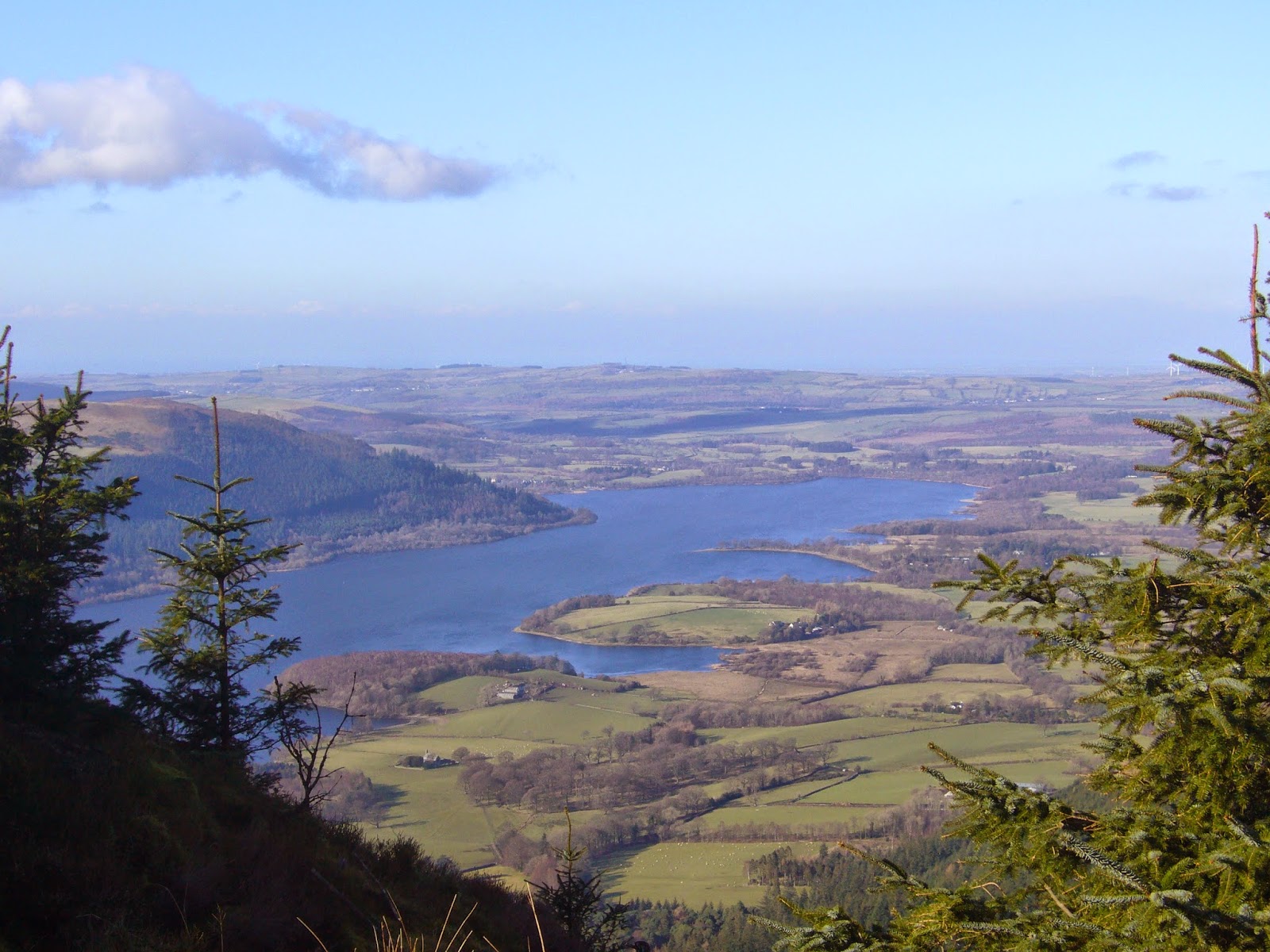February 14th - what could one expect? A low sky? Drizzle? But instead we were blessed by the first of two glorious days, not of winter sunshine, but of the real thing - full-on blue skies, high wispy cloud, and just a bit of haze to take the edge off the views.
Last year we climbed Dodd for the first time, and now it looks like entering our regular rotation of walks. We climbed up through woodlands already alive with birdsong, on paths which are so well maintained that you don't have to pick your way. Opposite, the flank of Skiddaw still bore streaks of snow; the summit of Lower Man intermittently wreathed in cloud.
We emerged from the woodland; suddenly, there was the view - right down Derwentwater to Lodore, the lake glistening in the haze.
A little higher, and the view to the west opened up: Bassenthwaite, with all the land down to the Solway beyond.
By now a brisk wind had got up, as often on even a small top. We ate lunch sitting on a rock and then made our way down the terraced paths to the Sawmill tearoom at the bottom. Three miles, but, like last time, it took three hours as it is quite a stiff climb.
And so to Sunday: another clear, bright day. We took out our bikes and headed up the coast. Once, you had to compete with boy racers testing their engines on the coastal road to Silloth, but now a very useful track has been laid, for cycling and walking, and it is much used. We were able to take our time, stopping to survey the foreshore which was alive with birdlife: redshanks, oystercatchers, curlew, their wavering, trilling calls unmistakable.
A little further and we saw stonechats sunning themselves, perched out atop exposed stalks.
We went on through Allonby and up to Beckfoot, where we ate lunch sitting on the beach - in February.
The last day of good weather saw us taking the route above Loweswater, leading to High Nook Tarn. On our way we crossed a sheltered field in which many birds were foraging. first we saw a songthrush, now increasingly rare for us. But then we saw both redwings and fieldfares, which are winter thrushes. Two bullfinches were perched in a bush and I was delighted to spot a treecreeper. I am not a birder, but it is good to be able to name the species, just as we are increasingly able to identify individual hilltops in the Lakes.
Work continues on my latest project: the Skye cardigan. The chart for this is available free on
Ravelry, where it was used on the front of socks. Here, I am using a maroon Shetland
heathered with ginger and rust, paired with the Katia Ole sock yarn in a pinkish colourway.
The challenge here was to find a way of mirroring the chart for the two fronts. What do you know? It turns out that holding the chart up to a mirror, and taking a photo of it in the mirror, gives a good enough image to use for the second front.











.JPG)